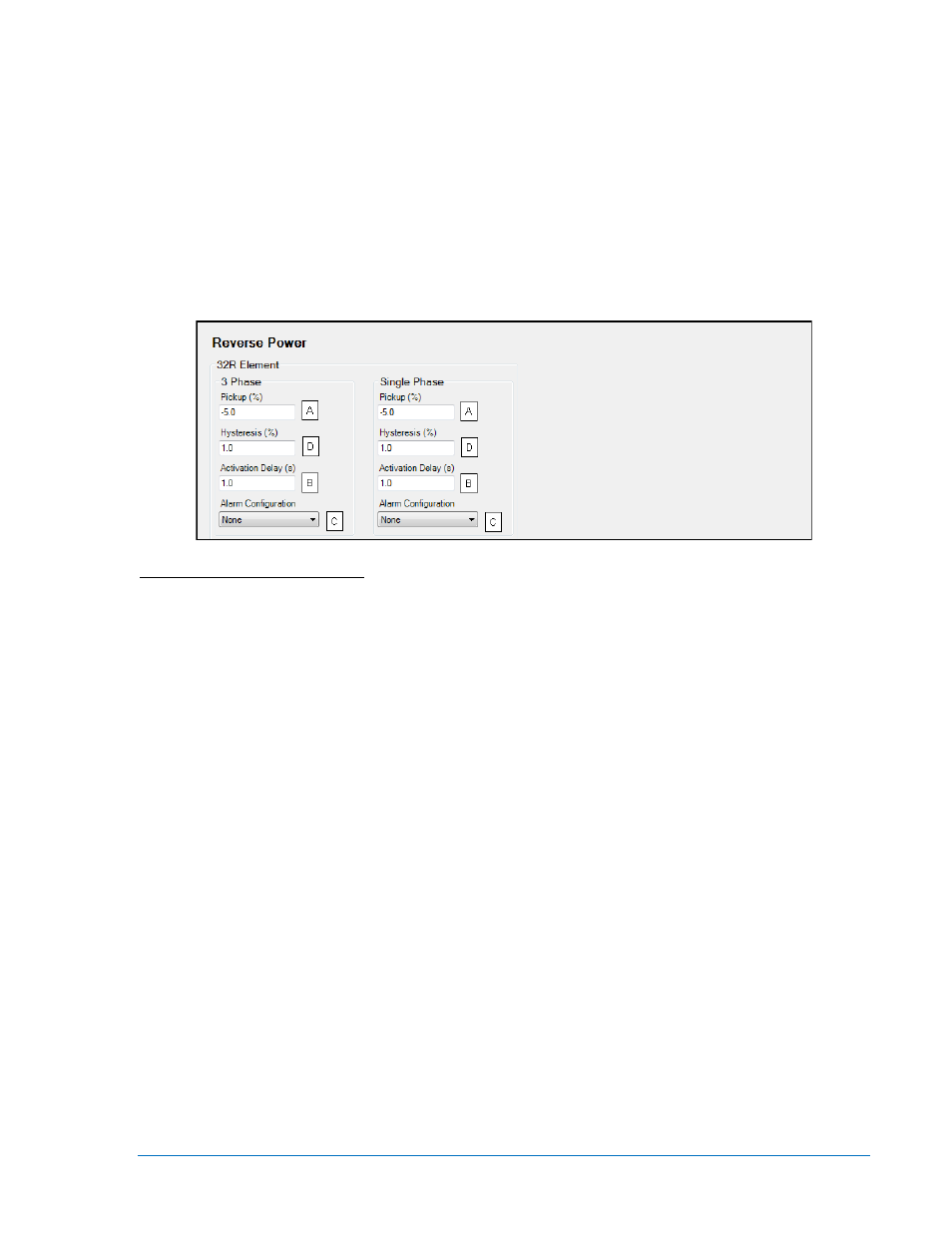Loss of excitation protection (40q), Loss of excitation protection (40q) -65, Figure 4-55. reverse power -65 – Basler Electric DGC-2020 User Manual
Page 175

Genset KW Rating on the Rated Data screen. When a single-phase override contact input is received by
the DGC-2020, the reverse power protection settings automatically switch from the three-phase settings
to the single-phase reverse power protection settings. The 32R element monitors three-phase real power
when three-phase sensing is active or single-phase real power if single-phase sensing is active.
When the total wattage in the tripping direction (generator absorbing power) is greater than the pickup
setting
A
for the duration of the 32R activation delay setting
B
, a reverse power condition is annunciated. A
reverse power annunciation can be user-selected to trigger a pre-alarm
C
(warning) or alarm
C
(shutdown).
A reverse power annunciation can also be user-configured to close a programmable output.
The hysteresis setting
D
functions as a reverse power dropout by preventing rapid switching of the pickup
output.
The element is disabled when Alarm Configuration is set to “None”. Element status is available in
BESTlogicPlus Programmable Logic when “Status Only” is selected.
The BESTCOMSPlus Reverse Power screen is illustrated in Figure 4-55.
Figure 4-55. Reverse Power
A
Pickup: –50% to +5% of rated watts in 0.1% increments.
B
Activation Delay: Adjustable from 0 to 30 s in 0.1 s increments.
C
Alarm Configuration: None, Alarm, Pre-Alarm, or Status Only.
D
Hysteresis: Adjustable from 1 to 10% in 0.1% increments.
Loss of Excitation Protection (40Q)
Two sets of loss of excitation settings are provided: one for three-phase generator connections and one
for single-phase generator connections. The pickup setting
A
entered is based on the percentage of the
machine Rated kvar on the Rated Data screen. When a single-phase override contact input is received by
the DGC-2020, the loss of excitation protection settings automatically switch from the three-phase
settings to the single-phase loss of excitation protection settings.
When a generator’s excitation power is lost, the generator acts as a large inductor. The generator begins
to absorb large quantities of vars. The 40Q acts on the principal that if a generator begins to absorb vars
outside of its steady state capability curve, it has likely lost its normal excitation supply. The 40Q monitors
three-phase reactive power when three-phase sensing is active or single-phase reactive power if single-
phase sensing is active. It compares the reactive power to the 40Q response curve defined by the 40Q
pickup setting. Refer to Figure 4-56.
9400200990 Rev X
DGC-2020 BESTCOMSPlus
® Software
4-65
